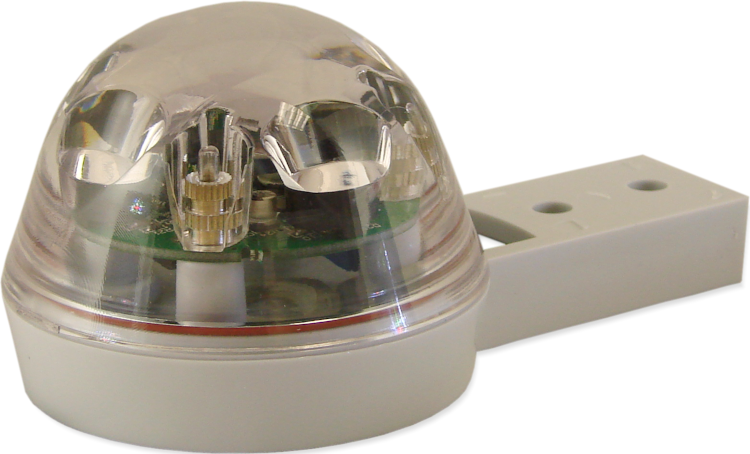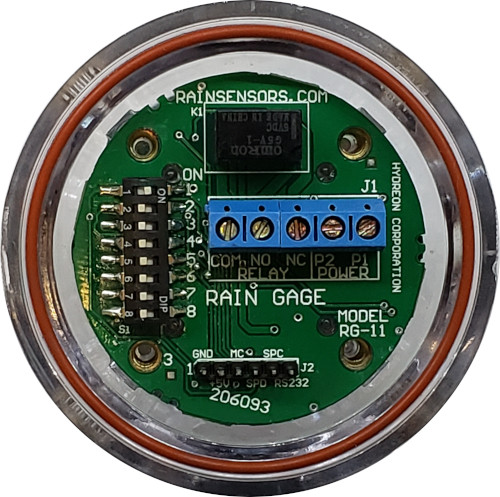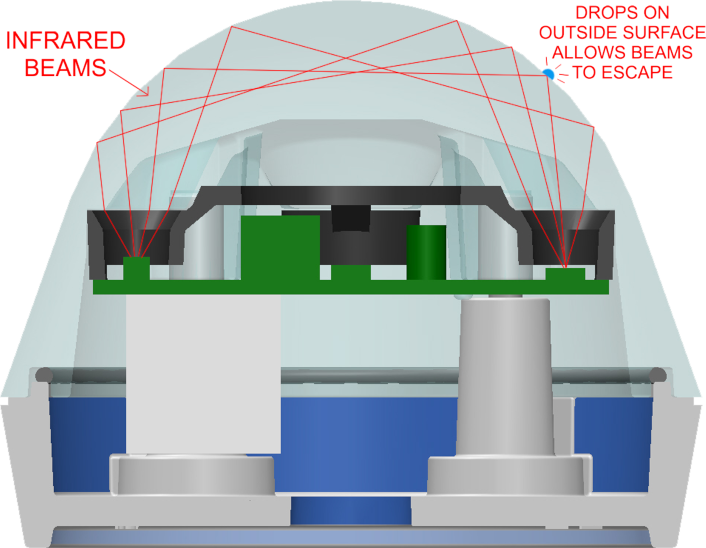

The RG-11 circuit board. The DIP switch programs the mode, and connections are made with convenient screw terminals.
The Hydreon RG-11 Solid State Rain Gauge senses water hitting its outside surface using beams of infrared light. It uses the same sensing principle used in millions of automotive rain sensing windshield wiper controls. The RG-11 is optical– not mechanical, chemical, or conductive. Consequently, it is far more rugged, sensitive and reliable than any other technology. The sensor is extremely sensitive, and virtually immune to false trips. Yet, it is completely unaffected by jostling and motion. There are no exposed conductors to corrode, and no openings for bugs to crawl into. There is no place for leaves or other debris to collect.

The patented Rain Gauge optical design keeps the beams inside the sensor, away from the influences of falling leaves and spiderwebs.
Applications for the Rain Gauge
The Hydreon Optical Rain Gauge family is suitable for almost any application that requires a reliable and sensitive rain sensor, including:
Questions? Email us at info@hydreon.com
Accuracy and the RG-11
Not as accurate as a properly maintained Tipping Bucket, but a better choice for many applications. Read more about the accuracy here
